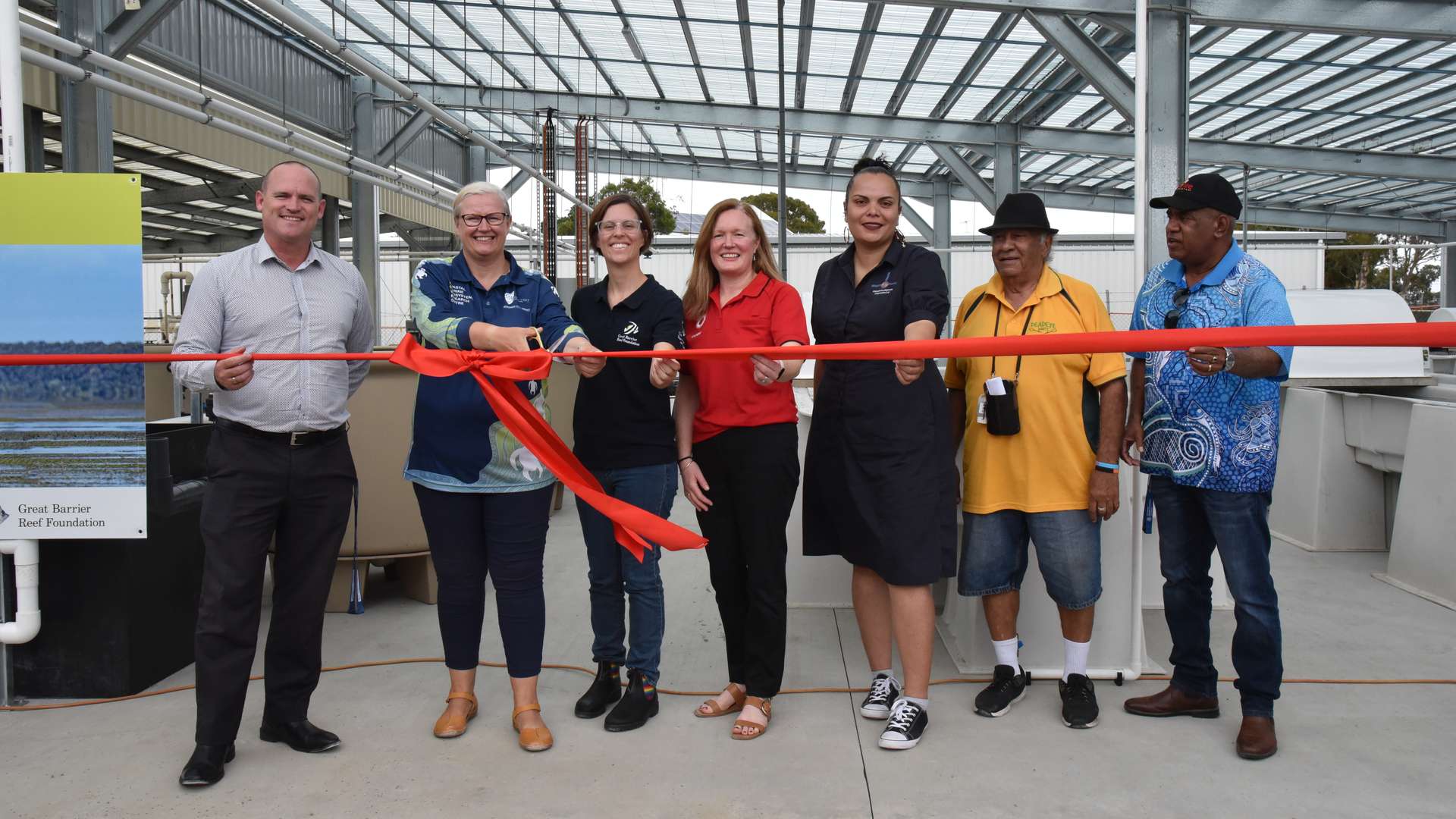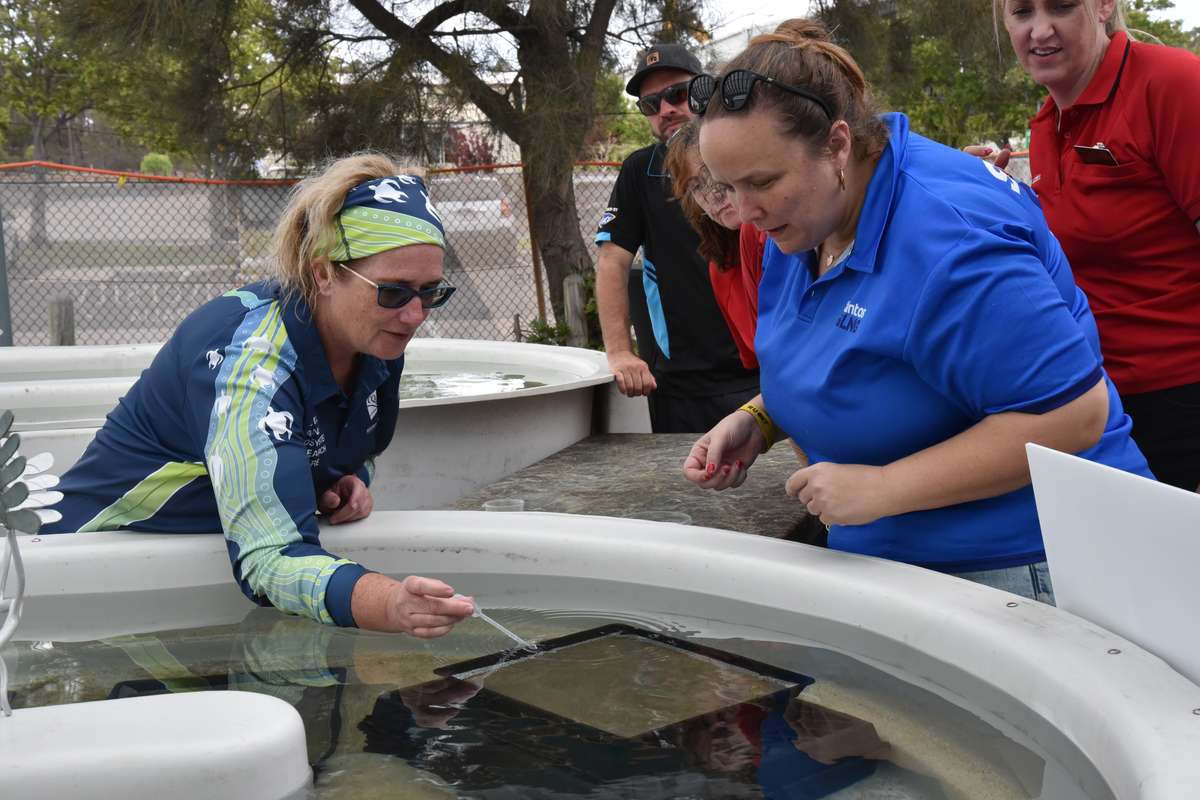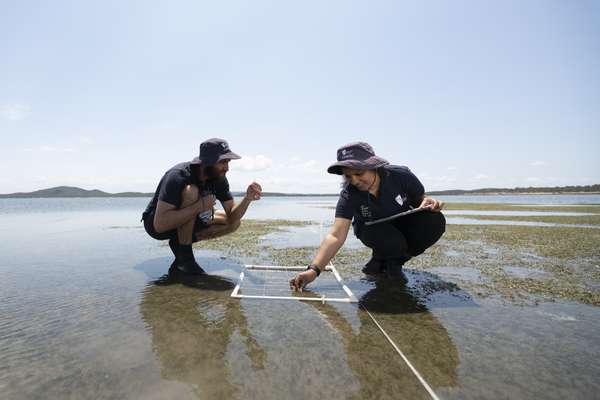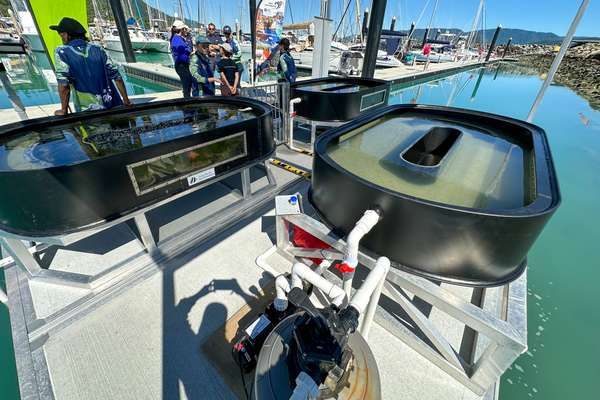
CQUniversity Coastal Marine Ecosystems Research Centre Seagrass Nursery on the Gladstone marina, is the first stage of the $15 million CMERC redevelopment which has been generously funded by the Australian Federal Government to develop evidence-based, innovative research solutions to shape sustainable coastal futures.
The facility supports the Reef 2050 Plan objective of ‘Resilient seagrass meadows that maintain condition’.
It is the world’s largest purpose-built seagrass restoration nursery, serving as a research and development hub for both national and international seagrass restoration efforts supported by nurseries, but also providing restoration propagules for larger scale seagrass restoration in the region. The partnerships with Traditional Owners involved in seagrass restoration across the GBR have already grown and the nursery is co-run with Port Curtis Coral Coast Indigenous Sea Rangers that have been training with CMERC over the past two years.
SeaGrow, is a dedicated seagrass nursery facility in Central Queensland. This innovative facility will feature a state-of-the-art aquaria system equipped with specialized grow-out, flowering, and seed capture components designed to cultivate seagrass propagules for large-scale restoration initiatives.
Construct a fully functional seagrass nursery in collaboration with Traditional Owners and partners, supplying seeds for successful restoration trials.
Develop and establish protocols for seagrass cultivation, including best practice guidelines for operations and community engagement through research and stakeholder consultations.
Create a training initiative in partnership with an Indigenous-owned enterprise to ensure the sustainable operation of SeaGrow.
Facilitate the recovery of 10 hectares of degraded seagrass meadows through seed-based enhancement techniques.
Evaluate changes in seagrass cover and the related shifts in ecosystem services to better understand the benefits of seagrass.
With the establishment of SeaGrow and its propagation protocols, this project will empower the community with the resources and knowledge necessary to support port managers in restoring lost seagrass and enhancing recovery in degraded meadows. It aims to offset development impacts, accelerate the growth of restoration cultivation industries, and strengthen Traditional Owners’ capacity in sea country habitat restoration.
The anticipated outcomes include a healthier marine ecosystem, increased blue carbon capture, long-term job creation in restoration cultivation, and enhanced collaboration between Traditional Owners and the environmental restoration sector.
Headquartered on the shoreline of the Gladstone marina, CMERC is the only coastal and marine research facility in Central Queensland and features world-class research equipment and laboratories with access to cutting-edge analytical capabilities.

CMERC has been established to work with coastal industries and communities to develop practical and sustainable solutions for our unique coast and marine environments.

CMERC’s greatest research facilities – the unique ecosystems, industries and communities of the Queensland coast – is right on our doorstep.

Learn more about the members of the Coastal Marine Ecosystems Research Centre

CQUniversity Australia is a trading name of Central Queensland University
ABN: 39 181 103 288
RTO Code: 40939
CRICOS: 00219C
TEQSA: PRV12073